Archives
- 2025-12
- 2025-11
- 2025-10
- 2025-09
- 2025-03
- 2025-02
- 2025-01
- 2024-12
- 2024-11
- 2024-10
- 2024-09
- 2024-08
- 2024-07
- 2024-06
- 2024-05
- 2024-04
- 2024-03
- 2024-02
- 2024-01
- 2023-12
- 2023-11
- 2023-10
- 2023-09
- 2023-08
- 2023-07
- 2023-06
- 2023-05
- 2023-04
- 2023-03
- 2023-02
- 2023-01
- 2022-12
- 2022-11
- 2022-10
- 2022-09
- 2022-08
- 2022-07
- 2022-06
- 2022-05
- 2022-04
- 2022-03
- 2022-02
- 2022-01
- 2021-12
- 2021-11
- 2021-10
- 2021-09
- 2021-08
- 2021-07
- 2021-06
- 2021-05
- 2021-04
- 2021-03
- 2021-02
- 2021-01
- 2020-12
- 2020-11
- 2020-10
- 2020-09
- 2020-08
- 2020-07
- 2020-06
- 2020-05
- 2020-04
- 2020-03
- 2020-02
- 2020-01
- 2019-12
- 2019-11
- 2019-10
- 2019-09
- 2019-08
- 2019-07
- 2019-06
- 2018-07
-
Bromoenol lactone Regarding the HT B receptors they act as t
2024-08-13
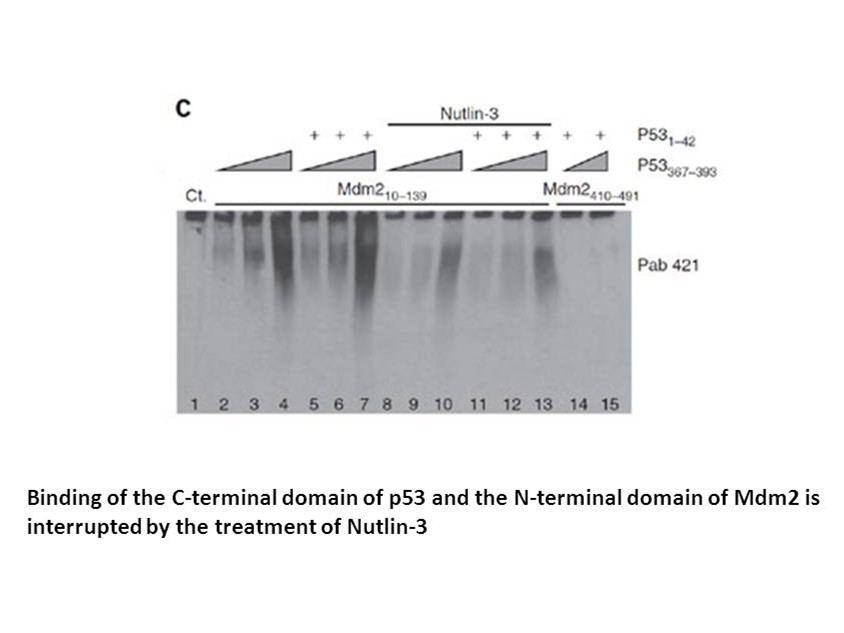
Regarding the 5-HT1B receptors, they act as terminal receptors and are involved in the presynaptic regulation of the release of 5-HT. But at spinal level these receptors are principally situated post-synaptically (Sari, 2004). The ability of autoreceptors to regulate extracellular levels of 5-HT dur
-
The relatively high concentration of HT used in this study
2024-08-13
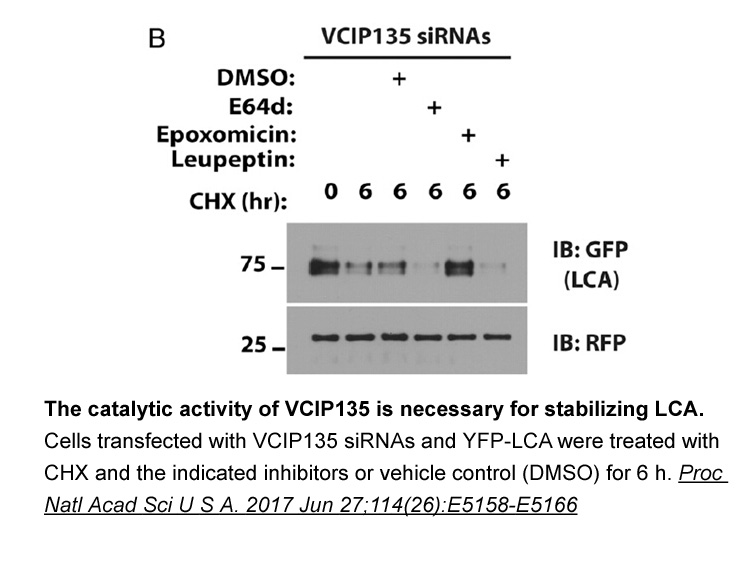
The relatively high concentration of 5-HT used in this study (100 µM) is consistent with the concentrations used in other published ex vivo studies (Ropert and Guy, 1991, Passani et al., 1994, Shen and Andrade, 1998). In our paradigm 5-HT was focally applied at the surface of the slice via a fast pe
-
In the vasculature it is known that
2024-08-13
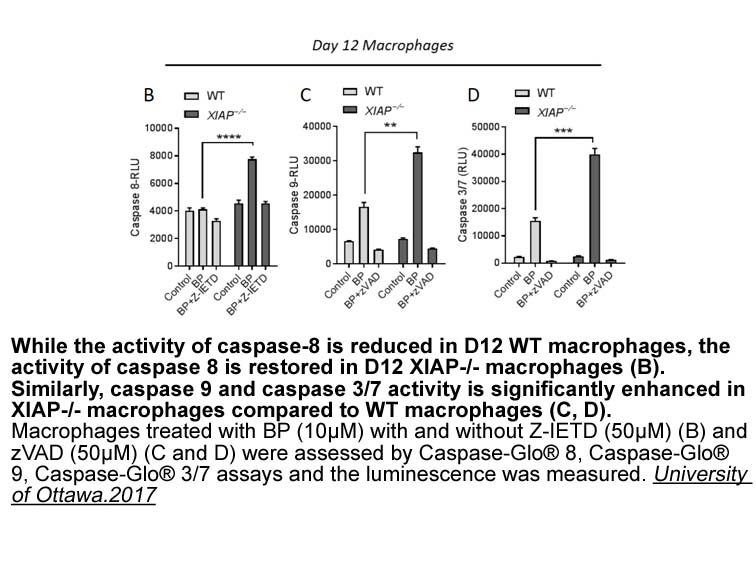
In the vasculature, it is known that A2A and A2B adenosine receptors are stimulatory for adenylyl-cyclase, leading to cyclic-AMP (cAMP) production and vasodilation, while the A1 and A3 adenosine receptors are linked to the inhibitory Gi, suppressing adenylyl-cyclase and favoring contraction. However
-
Based on the improved characteristics of the
2024-08-13

Based on the improved characteristics of the mutant ECDs we proceeded to crystallization trials, starting with the β1-BPloop as the most promising. We obtained rod shaped hexagonal crystals reproducibly, but with moderate diffraction ability (Fig. 5). Furthermore, the crystals were sensitive in moun
-
Our results using RT PCR confirm earlier
2024-08-13

Our results using RT-PCR confirm earlier findings (Wilisch et al., 1999, Bruno et al., 2004) including the presence of both the P3A+ and P3A− isoforms of the α-subunit (Beeson et al., 1990). The lack of detection of the ε-subunit mRNAs in some thymomas, and lack of α-, β-, δ- and γ-subunit mRNAs by
-
Introduction According to Uganda s Ministry of Health MOH
2024-08-12
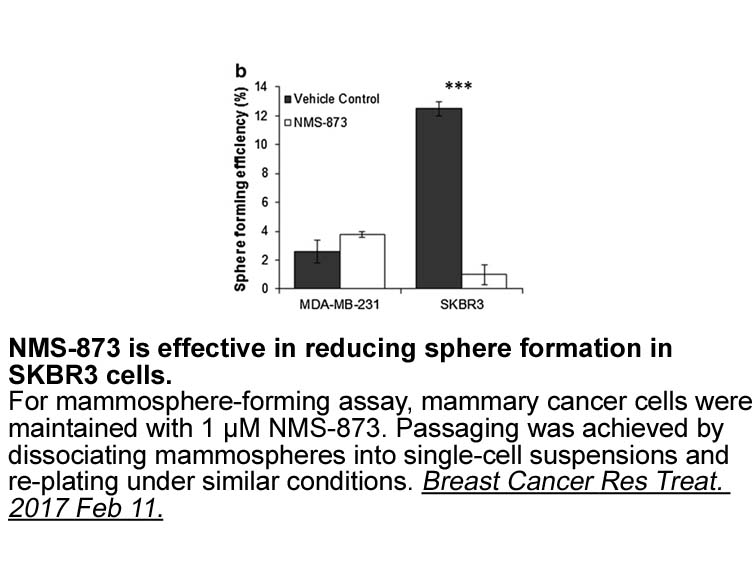
Introduction According to Uganda's Ministry of Health (MOH 2012a:91), intermittent preventive treatment (IPT) to avoid malaria during pregnancy is a free preventive service available to all pregnant women without clinical signs and symptoms of malaria, attending prenatal clinics. However, pregnant
-
estrogen related receptor Physical and chemical preservative
2024-08-12

Physical and chemical preservatives such as ultraviolet and ɣ-rays irradiation, sulphur and aluminium phosphide fumigation, etc, have been introduced to inhibit the growth of fungi. Nevertheless, due to the potential decomposition reactions and residues, as well as their own potential toxicity, and
-
br Conclusions br Funding This work was supported by
2024-08-12
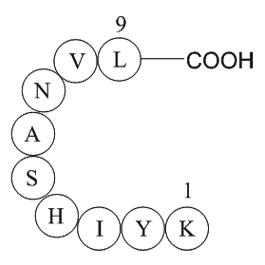
Conclusions Funding This work was supported by a Finnish government subsidy for health science research [grant numbers TYH2012141, TYH 2013218, and TYH 2014216]; the SSAC Foundation [grant numbers SLS-504141 and SLS-693781]; and the Paulo Foundation. The funding sources had no involvement in s
-
While there is much in
2024-08-12
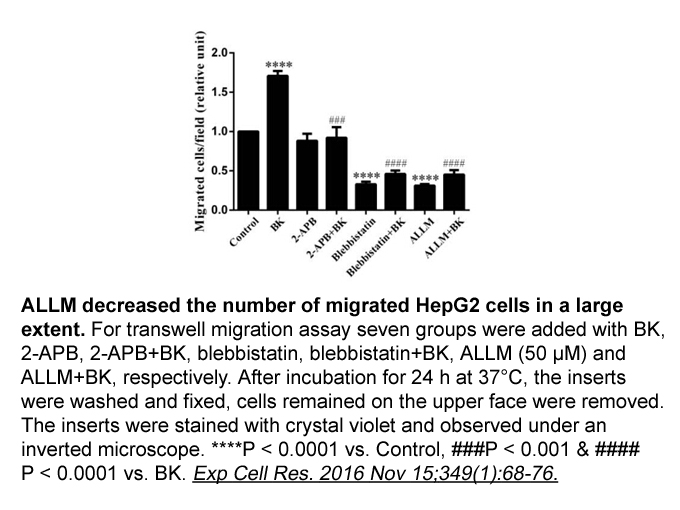
While there is much in vivo work on prion-like Aβ, it has not been shown that one can induce inclusions of Aβ in cultured cells as has been shown for tau and α-synuclein. One reason is practical; Aβ is a low molecular weight metabolite cleaved from within the larger amyloid precursor protein (APP) a
-
Platelet derived growth factor PDGF and ciliary neurotrophic
2024-08-12
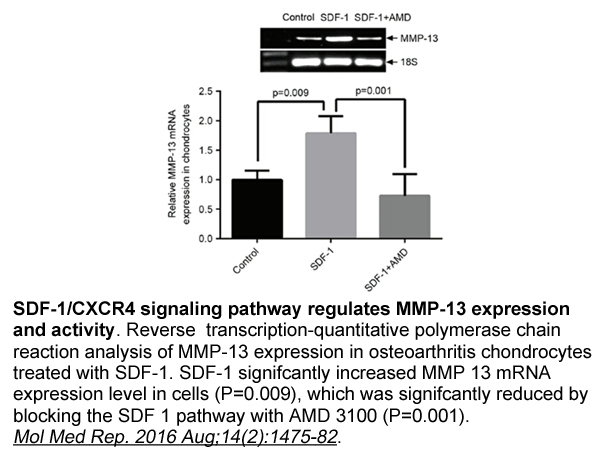
Platelet-derived growth factor (PDGF) and ciliary neurotrophic factor (CNTF) are expressed by glial Candesartan and are important to neuron survival and the maintenance of oligodendrocytes. These neurotrophic factors contribute to the remyelination process by increasing the proliferation of oligoden
-
The mechanism of transformation into SCLC is unclear but
2024-08-12
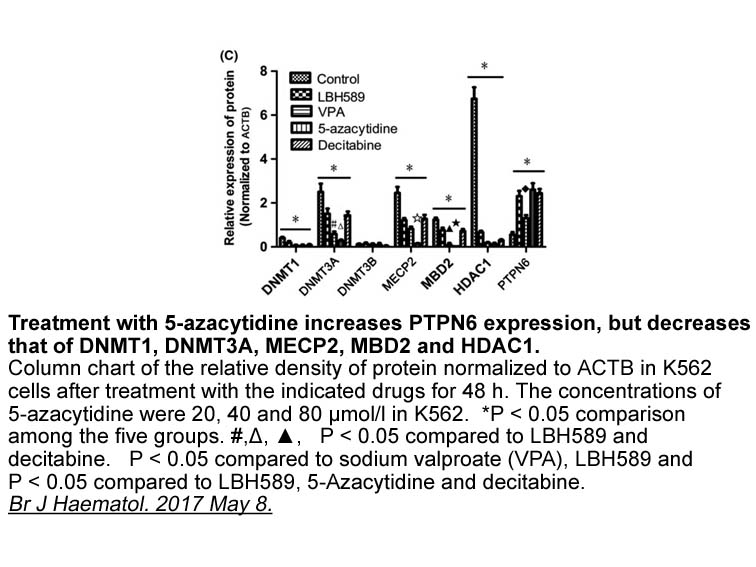
The mechanism of transformation into SCLC is unclear but the loss of retinoblastoma gene (RB) seems important and constitutes an initial event in the tumorigenic process. Some reports revealed the role of the RB gene loss in EGFR mutated NSCLC who transformed into SCLC [15]. In NGS we retrieved mut
-
The AHR potentially enhances IDO expression
2024-08-12
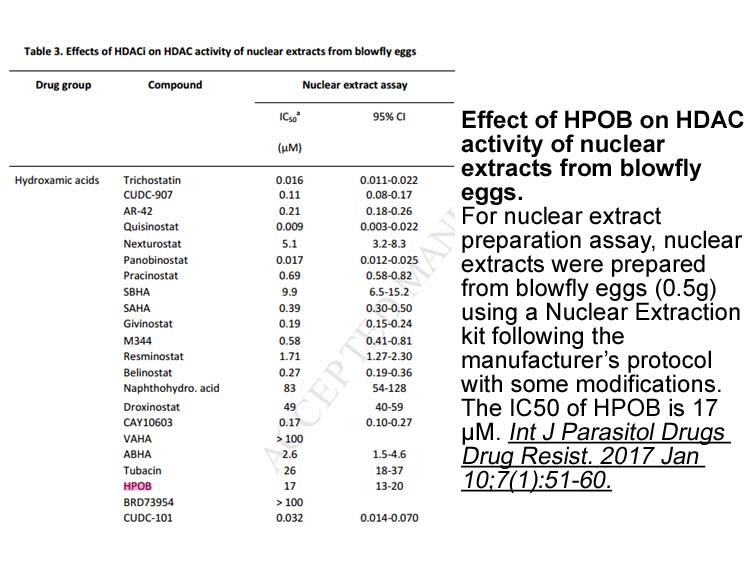
The AHR potentially enhances IDO-expression, possibly via crosstalk with several inflammatory signaling pathways (shown by now for IL6 and ‘signal transducer and activator of transcription’ (STAT) 3, and for NFκB, toll like receptor-pathways) [56,59,60]. IDO metabolizes Trp to kynurenines, which are
-
Luciferase Immunoprecipitation Systems LIPS which
2024-08-12
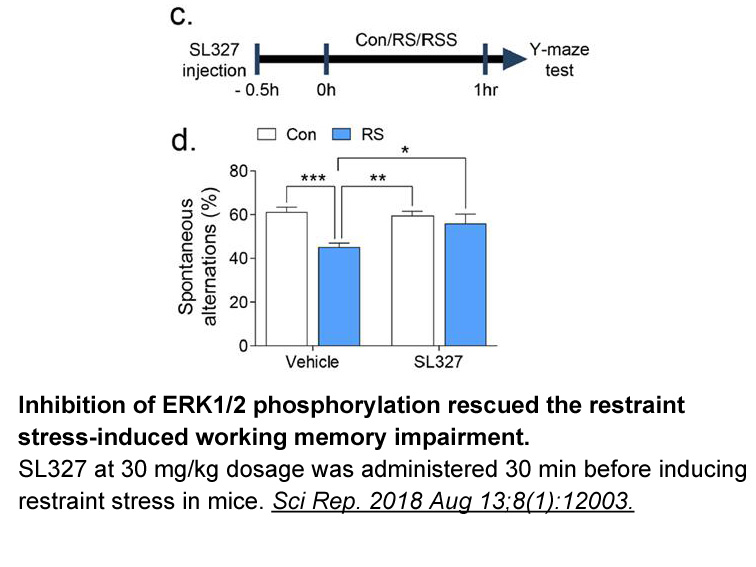
Luciferase Immunoprecipitation Systems (LIPS), which utilizes recombinant antigens fused to the enzyme reporter Renilla luciferase (Ruc) to detect patient antibodies, provides a unique platform to investigate Lin28 1632 australia directed against a variety of antigenic targets [25]. Previously, LIPS
-
Several dehidropregnenolone derivatives functionalized at C
2024-08-12

Several 16-dehidropregnenolone derivatives functionalized at C3, C4, C5 and C6 (Fig. 7) were prepared and evaluated as 5α-reductase inhibitors bearing in mind that after the formation of an enzyme-steroid complex a nucleophilic portion of the enzyme attacks the double bond of the steroid through Mic
-
Introduction The MMR system keeps the
2024-08-09
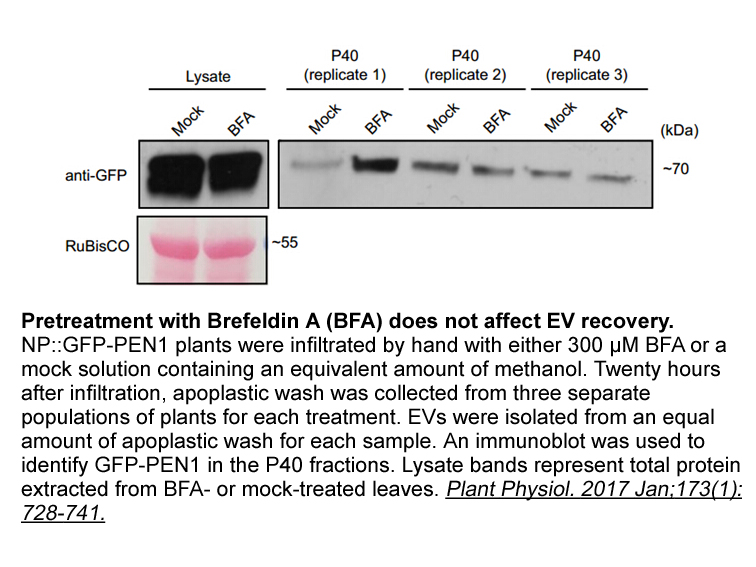
Introduction The MMR system keeps the fidelity of replication by repairing replication errors such as base-base mispairs and insertions/deletions. It plays a substantial role in restoring the fidelity of DNA and contributing to genome integrity [1]. The components of MMR are conserved in a broad ra
15018 records 105/1002 page Previous Next First page 上5页 101102103104105 下5页 Last page